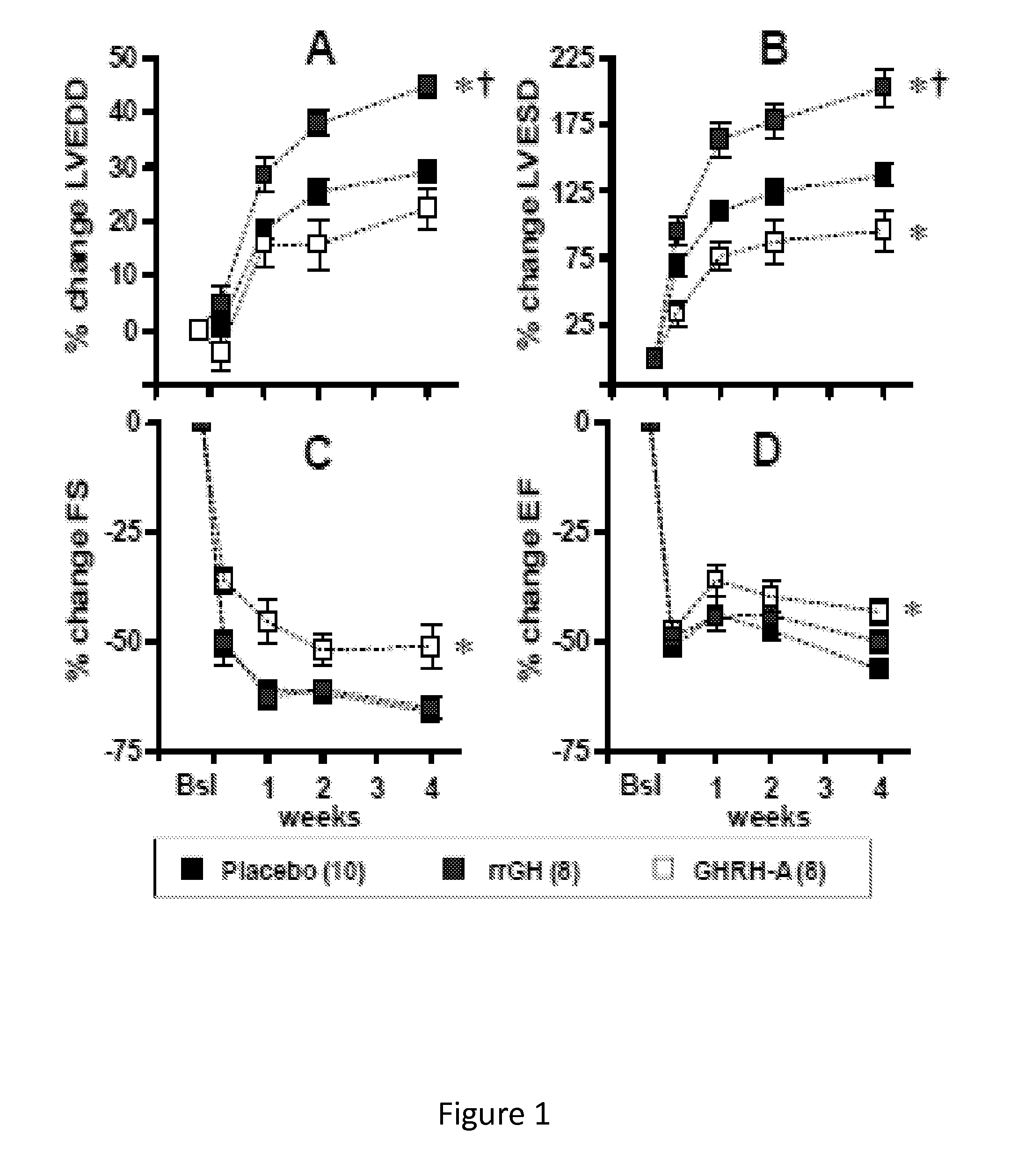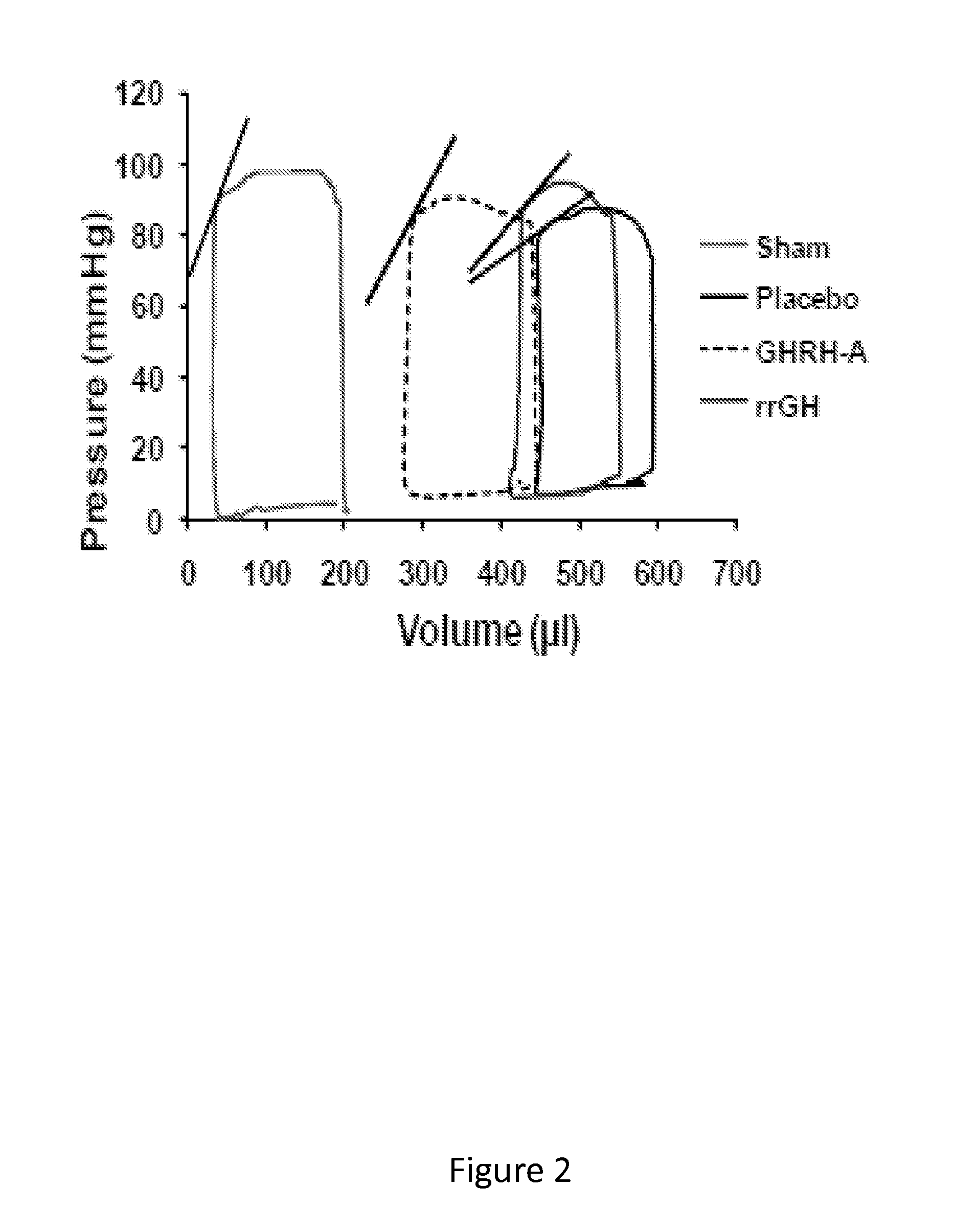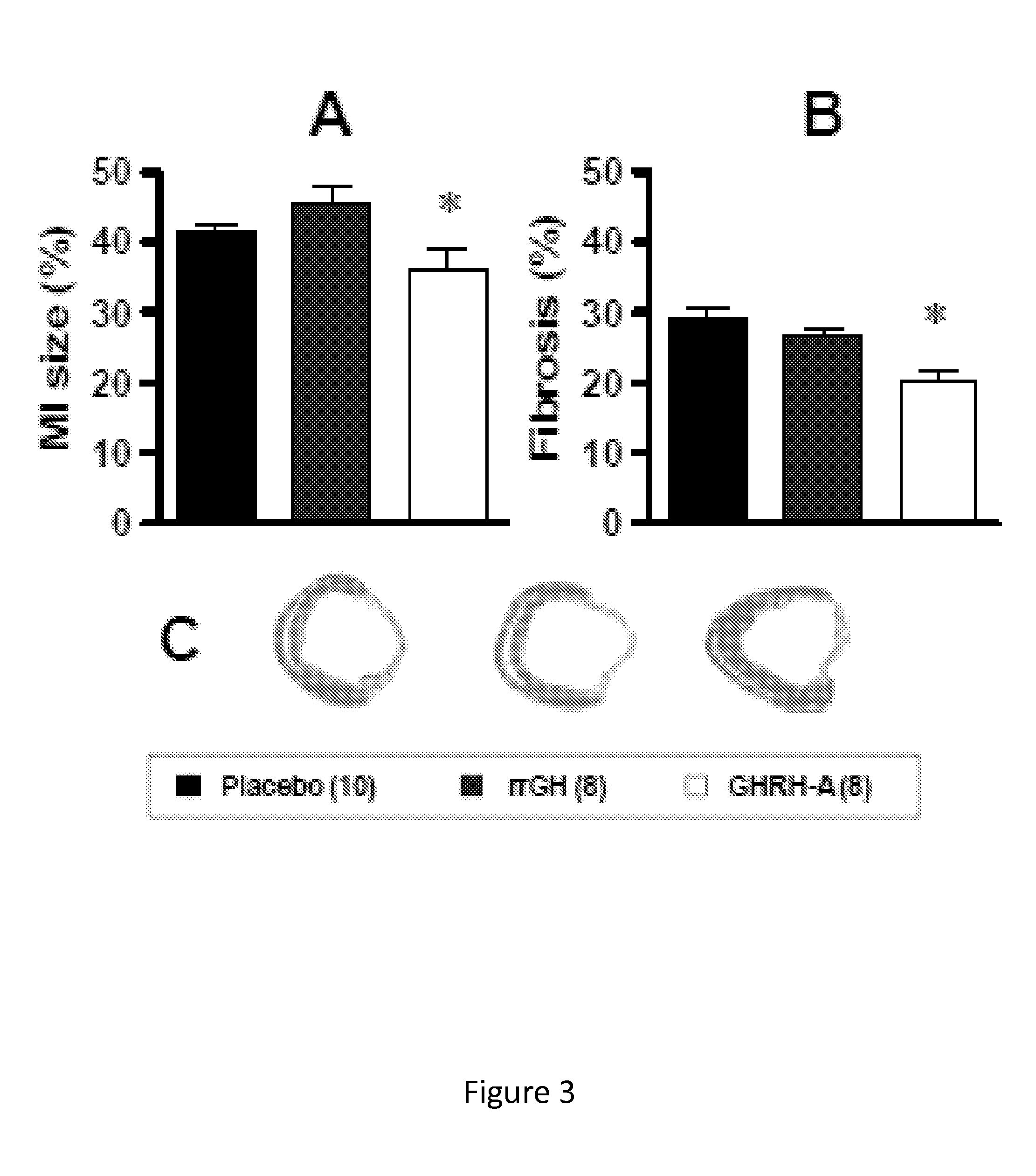Cardioprotective effects of ghrh agonists
a technology of agonists and agonists, which is applied in the direction of peptides, drug compositions, peptides, etc., can solve the problems of high possibility of unexpected side effects, high potential serious disadvantages, and inability to fully reverse heart failure and/or left ventricular dysfunction. to achieve the effect of improving cardiac function, improving cardiac structure and function, and reducing the size of the infar
- Summary
- Abstract
- Description
- Claims
- Application Information
AI Technical Summary
Benefits of technology
Problems solved by technology
Method used
Image
Examples
Embodiment Construction
Material and Methods
[0027]Animal Model
[0028]MI induced by coronary artery ligation was performed in female 6-month-old Fisher-344 rats as described previously (40). Animals were randomly assigned to receive placebo, GHRH-agonist (GHRH-A [JI-38], 50 μg / kg) or rat recombinant GH (rrGH, 0.5 mg / kg) starting 2 hours post-surgery. All treatment was given subcutaneously twice daily for 4 weeks. The Institutional Animal Care and Use committee of University of Miami approved all protocols and experimental procedures.
[0029]Drugs
[0030]Rat recombinant GH (rrGH) was supplied by Dr. A. F. Parlow from National Hormone and Pituitary Program (NHPP) (UCLA-Harbor, Torrance, Calif.) and GHRH-A (JI-38) ([Dat1 Gln8, Orn12,21, Abu15, Nle27, Asp28, Agm29]hGH-RH(1-29)NH2, the non-coded amino acids are abbreviated as follows: Dat: desaminotyrosine, Orn: ornithine, Abu: aminobutyric acid, Nle: norleucine, Agm: agmatine) was made in the laboratory of one of us (AVS) (12, 13).
Results
[0031]As depicted in FIG. 7A...
PUM
| Property | Measurement | Unit |
|---|---|---|
| Molecular weight | aaaaa | aaaaa |
| size | aaaaa | aaaaa |
| body weight | aaaaa | aaaaa |
Abstract
Description
Claims
Application Information
 Login to View More
Login to View More - R&D
- Intellectual Property
- Life Sciences
- Materials
- Tech Scout
- Unparalleled Data Quality
- Higher Quality Content
- 60% Fewer Hallucinations
Browse by: Latest US Patents, China's latest patents, Technical Efficacy Thesaurus, Application Domain, Technology Topic, Popular Technical Reports.
© 2025 PatSnap. All rights reserved.Legal|Privacy policy|Modern Slavery Act Transparency Statement|Sitemap|About US| Contact US: help@patsnap.com



